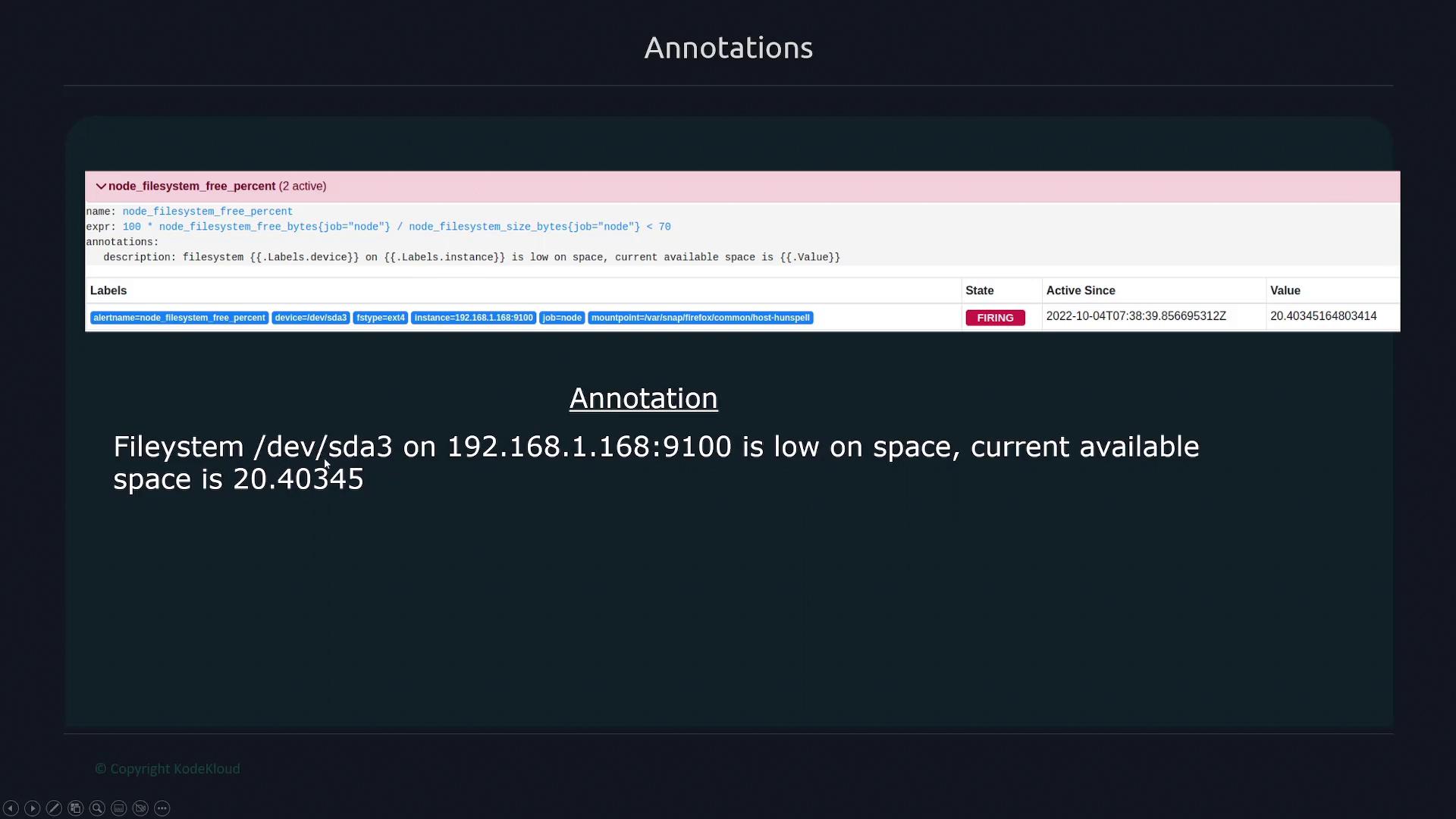Prometheus Certified Associate (PCA)
Alerting
Labels Annotations
In this guide, we explore how to use labels and annotations in Alertmanager to enhance the context provided with your alerts. These features allow you to classify alerts effectively and add detailed descriptive information for clearer incident responses.
Labels: Classifying and Routing Alerts
Labels are essential for classifying and matching alerts in Alertmanager. By adding key-value pairs as labels in your alert rule configuration, you can filter and route alerts according to specific criteria. For example, the following configuration demonstrates two alert rules with different severity levels:
groups:
- name: node
rules:
- alert: Node down
expr: up{job="node"} == 0
labels:
severity: warning
- alert: Multiple Nodes down
expr: avg_without(instance)(up{job="node"}) <= 0.5
labels:
severity: critical
When you inspect the alerts in Prometheus, you will see the labels contributing to the alert details:
- name: Node down
expr: up{job="node"} == 0
for: 3m
labels:
severity: warning
- name: Multiple Nodes down
expr: avg_without(instance)(up{job="node"}) <= 0.5
labels:
severity: critical
Note
Labels are not only used for alert identification but also play a crucial role in establishing routing rules within Alertmanager, ensuring that alerts reach the appropriate teams.
Annotations: Adding Descriptive Context
Annotations complement labels by providing additional descriptive details about an alert. They do not influence alert matching or routing but instead offer valuable context for understanding the alert's condition. Annotations use the Go templating language, enabling dynamic insertion of alert-related information.
For instance, you can access alert labels within an annotation using the following syntax:
- Use
{{ .labels }}to retrieve all labels. - Use
{{ .labels.instance }}to get the value of theinstancelabel. - Use
{{ .value }}to display the metric value at the time of the alert.
Consider an annotation named "description" that assembles information about the file system, device label, instance name, and current metric value. When triggered, the annotation might state: "file system /dev/sda3 on [target instance] is low on space. Current available space is 20.40345."

Warning
Ensure that the annotations you add are concise and provide only the necessary contextual information to avoid overwhelming the alert recipients.
When alerts are sent via email or SMS, these descriptive annotations provide your team with the crucial context needed to understand and respond to the alert effectively.
Further Reading
Understanding how to implement labels and annotations effectively in Alertmanager will streamline your incident response process and improve overall system monitoring.
Watch Video
Watch video content